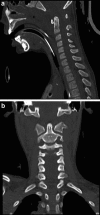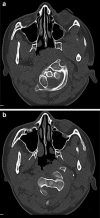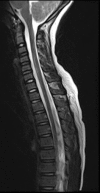Management of cervical spine trauma in children
- PMID: 30167742
- PMCID: PMC6791958
- DOI: 10.1007/s00068-018-0992-x
Management of cervical spine trauma in children
Abstract
Purpose: Paediatric cervical spine injuries are fortunately a rare entity. However, they do have the potential for devastating neurological sequelae with lifelong impact on the patient and their family. Thus, management ought to be exceptional from the initial evaluation at the scene of the injury, through to definitive management and rehabilitation.
Methods: We set out to review cervical spine injuries in children and advise on current best practice with regards to management.
Results: Epidemiology, initial management at the scene of injury, radiological findings and pitfalls of cervical spine trauma are outlined. Strategies for conservative and surgical management are detailed depending on the pattern of injury. The management of spinal cord injuries without radiological abnormality (SCIWORA) and cranio-cervical arterial injuries is also reviewed.
Conclusions: Due to a paucity of evidence in these rare conditions, expert opinion is necessary to guide best practice management and to ensure the best chance of a good outcome for the injured child.
Keywords: Cervical spine; Children; Fracture; Pediatric; SCIWORA; Trauma.
Conflict of interest statement
All authors declare that they have no conflict of interest.
Figures






References
Publication types
MeSH terms
LinkOut - more resources
Full Text Sources
Other Literature Sources
Medical

